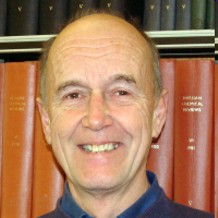Emeritus Professor John Lindsay Smith
It is with great sadness that we have heard the news that Emeritus Professor John Lindsay Smith passed away peacefully following surgery in Castle Hill Hospital on 3 August 2019.
John was recruited to York by Dick Norman in 1965 following his D Phil at Oxford and fresh from a post-doctoral appointment at Berkeley with Melvin Calvin, a Nobel Prize winner. He was one of a select group of young academics who welcomed the first intake of undergraduates into the Chemistry Department at York and he served as the first Director of Studies for Chemistry students in Derwent College. He was to remain on the staff at York until his retirement in 2005. John would have considered himself an organic chemist though he was a polymath with interests ranging from synthetic chemistry, through photodegradation to catalytic activation. He collaborated with a wide range of companies in the chemical industry as well as teaching on British Council courses overseas. John was 'Fabric/Buildings Office' with the responsibility for allocation of office and laboratory space in Chemistry and was a member of many different departmental and University committees.
Mechanistic studies of catalytic, organic and bio-organic oxidations
I continue to take an active interest in collaborative research with colleagues in the Chemistry Department and abroad. Current projects include:
- Studies on dye structure and photo-fading with Dr John Moore, funded by Fujifilm and EPSRC;
- Modelling lubricant oxidative degradation in combustion engines with Dr Moray Stark, funded by Shell, Infineum and EPSRC;
- Metal salen based models for superoxide dismutase and catalase with Professor Paul Walton, funded by Smith and Nephew and EPSRC.
- Metalloporphyrin-catalysed oxidations, a long standing collaboration with staff at the University of Saõ Paulo, Ribeiraõ Preto, Brazil.
Selected recent publications
- A manganese superoxide dismutase mimic based on cis,cis-1,3,5-triaminocyclohexane.
E A Lewis, H H Khodr, R C Hider, J R Lindsay Smith and P H Walton, Dalton Trans, 2004, 187-188. - Spectroscopic studies of Direct Blue 1 in solution and on cellulose surfaces: effects of environment on a bis-azo dye.
L C Abbott, S N Batchelor, L Jansen, J Oakes, J R Lindsay Smith and J N Moore, New J Chem, 2004, 28, 815-821. - A mechanistic study of the epoxidation of cinnamic acid by hydrogen peroxide catalysed by manganese 1,4,7-trimethyl-1,4,7-triazacyclononane complexes.
B C Gilbert, J R Lindsay Smith, A Mairata i Payeras, J Oakes and R Pons i Prats, J Mol Catal: Chem, 2004, 219, 265-272. - Biomimetic oxidation of praziquantel catalysed by metalloporphyrins.
A J B Melo, Y Iamamoto, A P J Maetrin, J R Lindsay Smith, M D Santos, N P Lopes and P S Bonato, J Mol Catal A: Chem., 2005, 226, 23-31. - Experimental and computational studies of the structure and bonding in parent and reduced forms of the azo dye Orange II.
L C Abbott, S N Batchelor, J Oakes, B C Gilbert, A C Whitwood, J R Lindsay Smith and J N Moore, J Phys Chem, 2005, 109, 2894-2905. - Organosulfur oxidation by hydrogen peroxide using a dinuclear Mn-1,4,7-trimethyl-1,4,7-triazacyclononane complex.
J R Lindsay Smith, J Murray, P H Walton and T R Lowdon, Tetrahedron Lett, 2006, 47, 2005-2008. - Ultrafast charge separation in a photoreactive rhenium-appended porphyrin assembly monitored by picosecond transient infrared spectroscopy.
A Gabrielsson, F Hartl, H Zhang, J R Lindsay Smith, M Towrie, A Vlcek and R N Perutz, J Amer Chem Soc,2006, 128, 4253-4266. - A mechanistic study of the liquid phase autoxidation of nonan-5-one.
C J Hammond, J R Lindsay Smith, E Nagatomi, M S Stark and D J Waddington, New J Chem, 2006, 30, 741-750, (2006).

